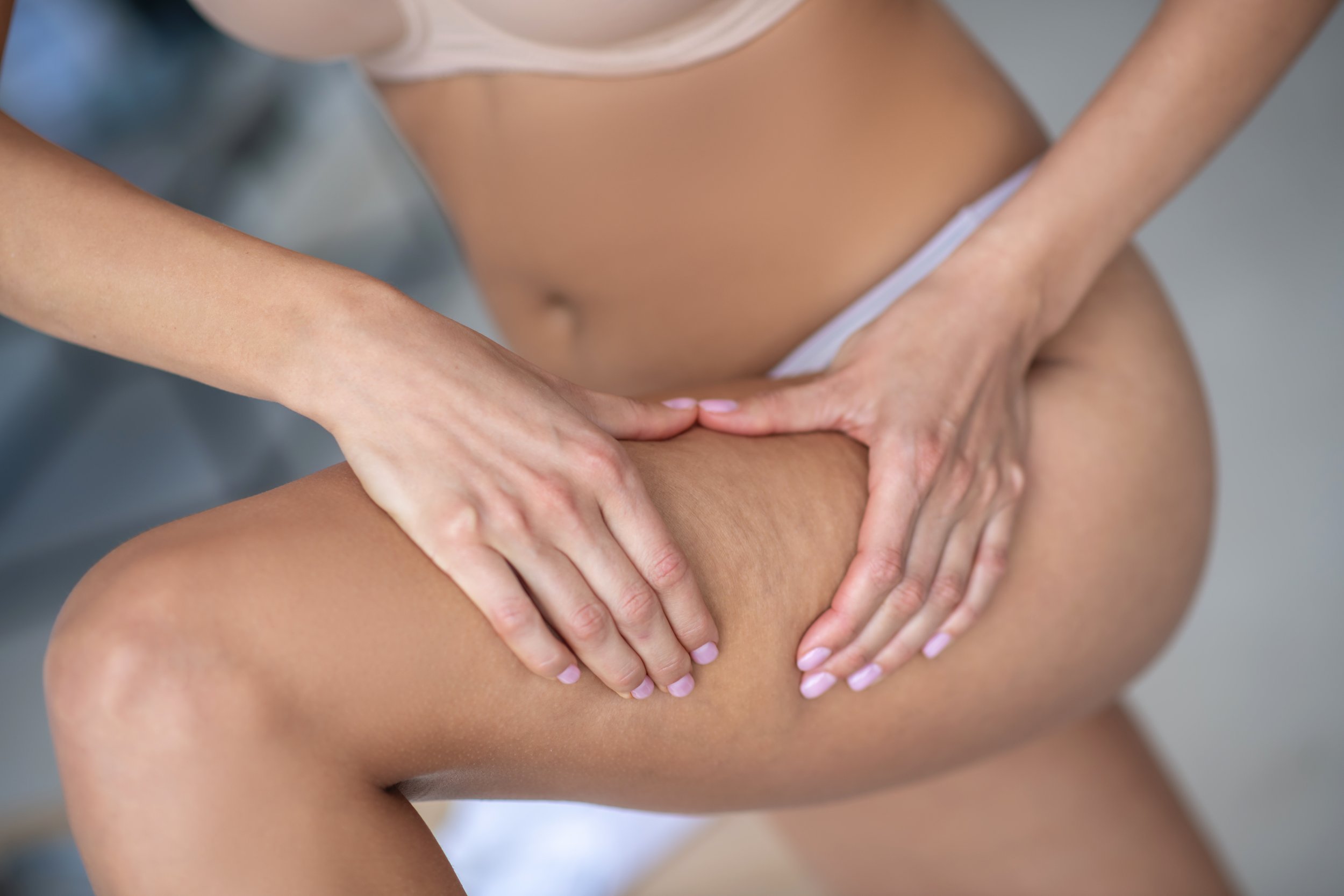Banish Cellulite: Unveiling the Secrets to Smoother, Gorgeous Skin!
Just as every wave leaves its mark on the shore, every effort you make towards reducing cellulite leaves a positive impact on your skin.
Cellulite is a common skin condition that affects about 90% of women and 10% of men. It is characterized by the appearance of dimpled, lumpy skin, typically on the hips, thighs, and buttocks. While cellulite is completely normal and not harmful, many people find it unsightly and seek ways to reduce its appearance. In this comprehensive guide, backed by scientific research, we will delve into the causes of cellulite, discuss various treatment options, and provide expert tips for achieving smoother, more beautiful skin.
Understanding Cellulite:
Cellulite is a multifactorial condition influenced by genetic, hormonal, and lifestyle factors. It occurs when subcutaneous fat pushes against the connective tissue, creating a dimpled appearance on the skin's surface. Several scientific studies have shed light on the causes and mechanisms behind cellulite development.
Genetic Predisposition: Research suggests that genetics play a significant role in determining an individual's susceptibility to cellulite. Certain genes involved in fat distribution, collagen structure, and circulatory function may contribute to its formation. If your family members have cellulite, there is a higher likelihood of them developing it.
Hormonal Factors: Hormones, particularly estrogen and progesterone, play a role in cellulite formation. These hormones can influence the structure and integrity of connective tissue, leading to a higher likelihood of cellulite development. Hormonal changes during puberty, pregnancy, and menopause can exacerbate its appearance.
Connective Tissue and Fat Distribution: The arrangement of connective tissue bands beneath the skin differs between men and women. In women, the bands are oriented vertically, allowing fat cells to protrude and create the characteristic dimpling effect. Men, on the other hand, have a crisscross pattern that provides better structural support.
Lifestyle Factors: Unhealthy lifestyle choices can contribute to cellulite development. Poor diets, characterized by high intakes of processed foods, saturated fats, and refined sugars, may increase fat accumulation and inflammation. Lack of physical activity, smoking, and excessive alcohol consumption can also worsen the appearance of cellulite by impacting blood flow and collagen production.
Treatment Options:
While complete elimination of cellulite may not be possible, several treatment options can help reduce its appearance:
Topical Creams, Lotions, and Gels: Certain topical products containing ingredients like caffeine, retinol, and antioxidants have shown promise in improving the appearance of cellulite. They work by enhancing blood flow, stimulating collagen production, and promoting fat breakdown. However, results may vary, and consistent, long-term use is necessary for noticeable effects.
Exercise: Regular physical activity, including both cardiovascular exercises and strength training, can help improve muscle tone and reduce the visibility of cellulite. Targeted exercises that focus on the hips, thighs, and buttocks, such as squats, lunges, and leg lifts, can be particularly beneficial.
Dry Brushing and Massage: Dry brushing the affected areas with a natural bristle brush before showering can help exfoliate the skin, stimulate lymphatic drainage, and improve blood circulation. Massage techniques, such as deep tissue massage or lymphatic drainage massage performed by a professional, can also contribute to cellulite reduction by enhancing lymph flow and smoothing the skin's appearance.
Medical Procedures: Several medical procedures can provide more significant results for cellulite reduction. These include:
a. Radiofrequency and Ultrasound: These non-invasive treatments use energy waves to heat the skin and stimulate collagen production, leading to smoother skin texture and a reduced appearance of cellulite.
b. Laser Therapy: Laser treatments can target cellulite by breaking down fat cells and stimulating collagen production. This procedure can provide noticeable results with minimal downtime.
c. Subcision: A minimally invasive surgical procedure that involves releasing the fibrous bands beneath the skin to reduce the dimpling effect.
d. Cellulite Removal Surgery (Mesotherapy): This invasive procedure uses injections of medications, vitamins, and minerals directly into the affected area to break down fat cells and improve skin texture. It is typically reserved for severe cases of cellulite.
Understanding the causes and treatment options for cellulite can empower individuals seeking to reduce its appearance. While there is no one-size-fits-all solution, a combination of healthy lifestyle choices, targeted exercises, and appropriate treatments can help minimize the visibility of cellulite and promote smoother, more beautiful skin. By adopting evidence-based approaches and expert tips, you can enhance your confidence and embrace your skin's natural beauty.
